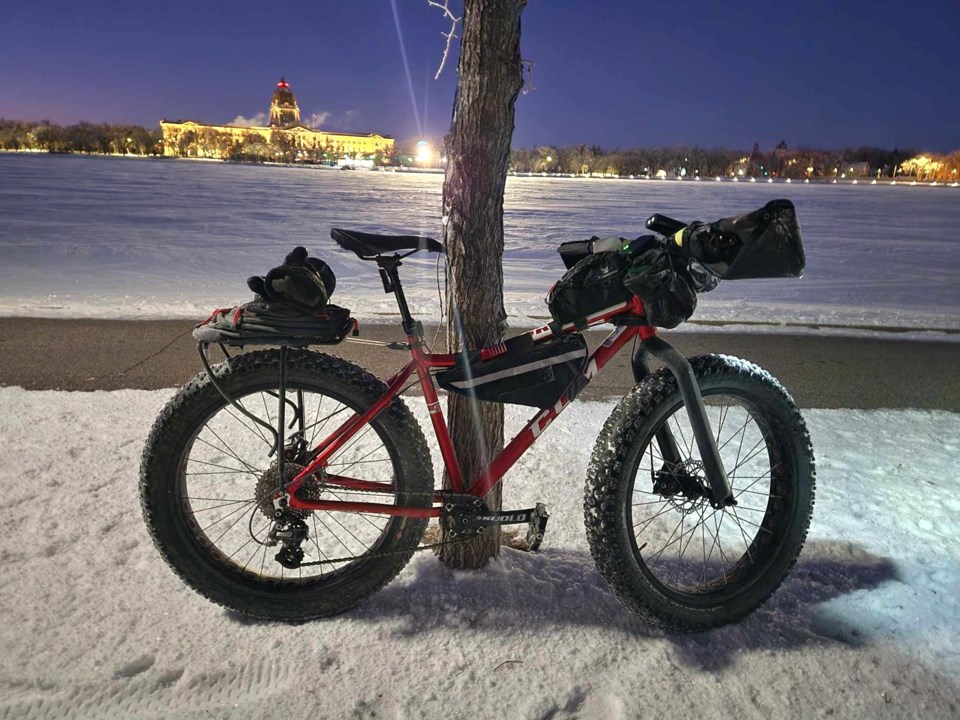YORKTON - If you’re looking for something rather unique to do Jan. 24-26 how about taking in the Fat Viking bike race?
The Fat Viking is a winter ultra endurance event.
The race course runs mainly on the trails around Geilo/ Skurdalen/ Dagali in Norway.
So wait, you can’t make it to Norway to ride a fatbike through the snow this year?
Not a problem explained Randy Lewis, a rider from Regina.
As it turns out there is an option to С����Ƶ in Norway.
The Global Fat Viking event was born in response to COVID, Lewis told Yorkton This Week, when the idea to “have people ride virtually” came about.
Lewis said the idea was “don’t come to Norway, ride where you are.”
That was back in 2020, and while COVID is no longer the threat it was, the global edition of Fat Viking has endured.
Last year in Saskatchewan some 49 riders, about half from Regina, but also from communities such as Saskatoon and even a trio from Esterhazy took part.
Lewis said weather at least in part determines participation. At minus-20 “it really impacts enrolment.”
The rules are simple starting with joining the Fat Viking race discussion group on Facebook.
From there you will find links which lead you to the site to print out your race plate/ starting bib, explained Lewis.
Then ride your fatbike (tire width 3.8 inch or wider, manufacturers label and no ebikes) between the 24th and 26th.
There are there categories 50 – 100 and 150 kilometres than can be ridden all at once, or spread over the three days, said Lewis.
You can ride wherever you want, create your own course - loops, out and back or whatever you please.
In that regard Lewis noted while it will be snow courses here, participants from Africa are riding in the sand. The where is not important. It’s the participation.
While there are concerns over social media at times, Lewis said it shines for something like the Global Fat Viking, as a forum to disseminate information, and then for participants to post ride photos to share with like-minded people.
The Global event remains a spin-off of the physical ride which happens in Norway where the Fat Viking 150 is an official qualifying race for the Iditarod Trail Invitational.
Those who manage to cover the full distance in less than 36 hours have checked off one of two qualifiers for the ITI in Alaska.
Such endurance races, and simply riding bikes in winter snow, and sand conditions, are really what led to the development of fatbikes.
While fat tires on bikes date back the early 1900s, said Lewis, the current bikes really began development in the 1980s and 90s, with production starting around 2005.
“We’re talking less than 20-years,” he said.
A fatbike is one with a tire at least 3.8 inches across, although more typically today 4-4.5 inches, added Lewis.
While there is a Fat Bikes of Regina Facebook page with nearly 500 followers, Lewis said he really isn’t sure how many fatbike riders there are in Regina. Although he guessed 200-300, a number he more than doubled when guessing at numbers provincially. He did note things are quite well organized in both Saskatoon and Regina, and then giving a nod to Winnipeg too, where trails exist for fatbike use.


.png;w=120;h=80;mode=crop)



